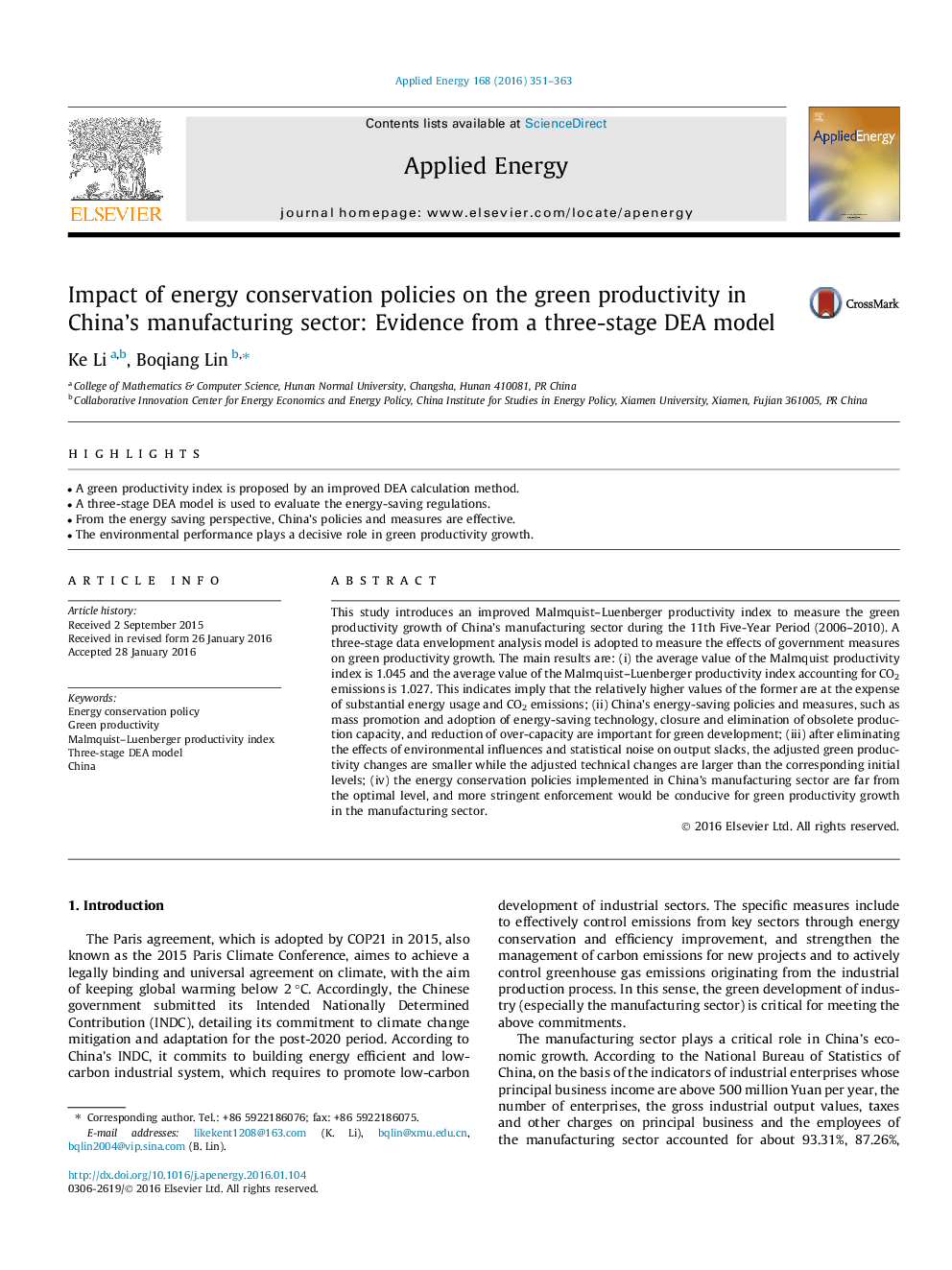| Article ID | Journal | Published Year | Pages | File Type |
|---|---|---|---|---|
| 6683808 | Applied Energy | 2016 | 13 Pages |
Abstract
This study introduces an improved Malmquist-Luenberger productivity index to measure the green productivity growth of China's manufacturing sector during the 11th Five-Year Period (2006-2010). A three-stage data envelopment analysis model is adopted to measure the effects of government measures on green productivity growth. The main results are: (i) the average value of the Malmquist productivity index is 1.045 and the average value of the Malmquist-Luenberger productivity index accounting for CO2 emissions is 1.027. This indicates imply that the relatively higher values of the former are at the expense of substantial energy usage and CO2 emissions; (ii) China's energy-saving policies and measures, such as mass promotion and adoption of energy-saving technology, closure and elimination of obsolete production capacity, and reduction of over-capacity are important for green development; (iii) after eliminating the effects of environmental influences and statistical noise on output slacks, the adjusted green productivity changes are smaller while the adjusted technical changes are larger than the corresponding initial levels; (iv) the energy conservation policies implemented in China's manufacturing sector are far from the optimal level, and more stringent enforcement would be conducive for green productivity growth in the manufacturing sector.
Related Topics
Physical Sciences and Engineering
Energy
Energy Engineering and Power Technology
Authors
Ke Li, Boqiang Lin,
